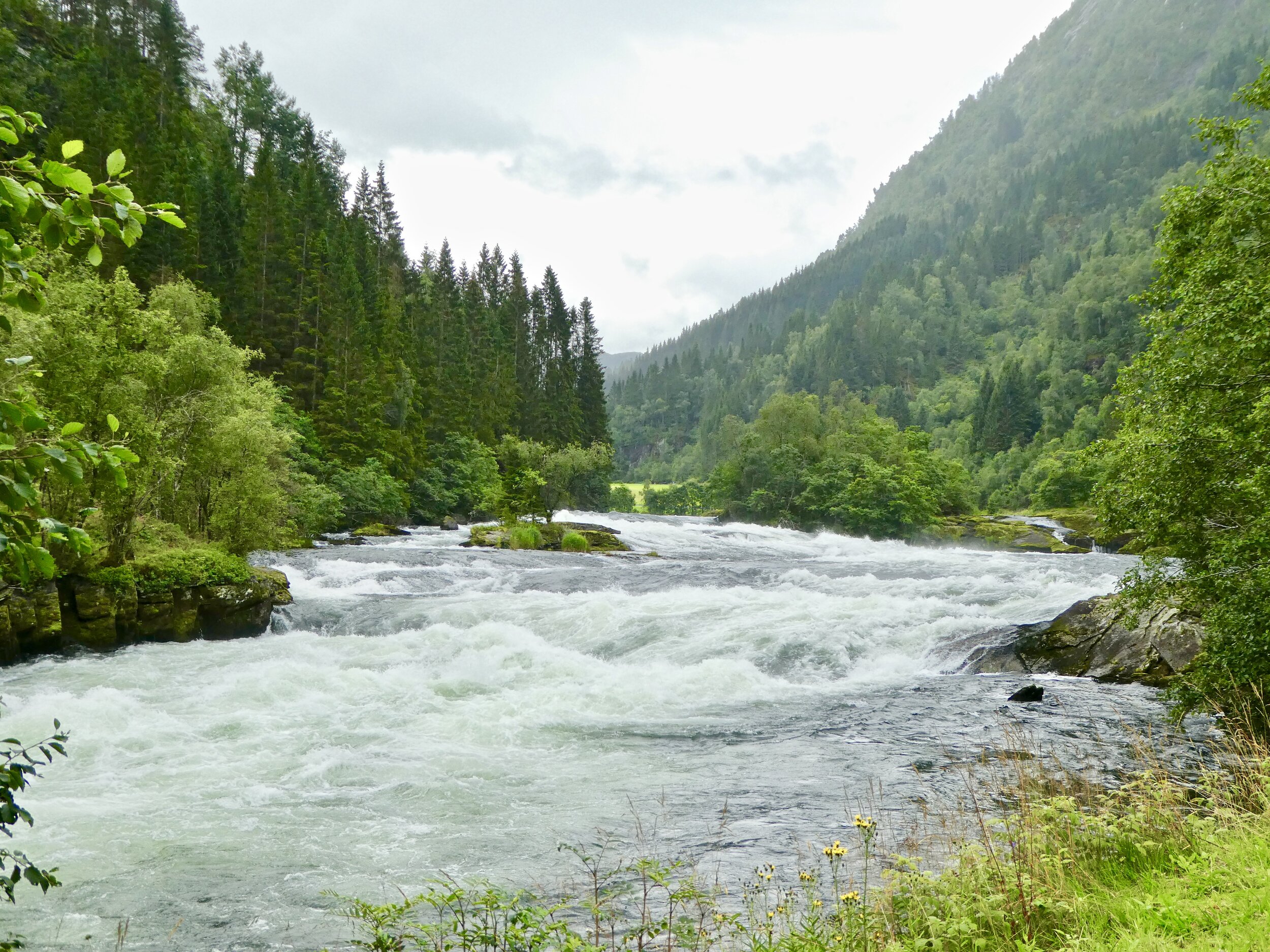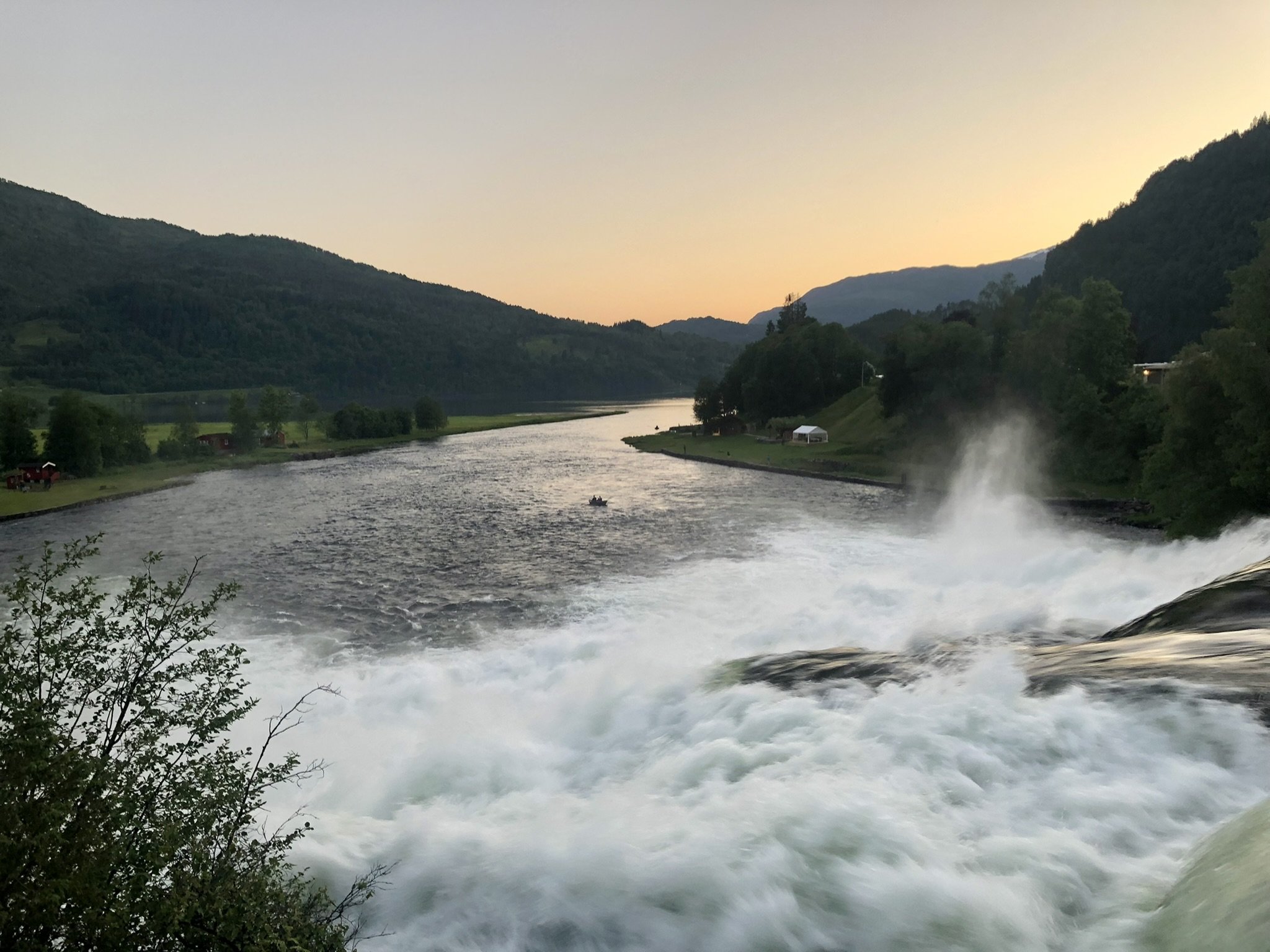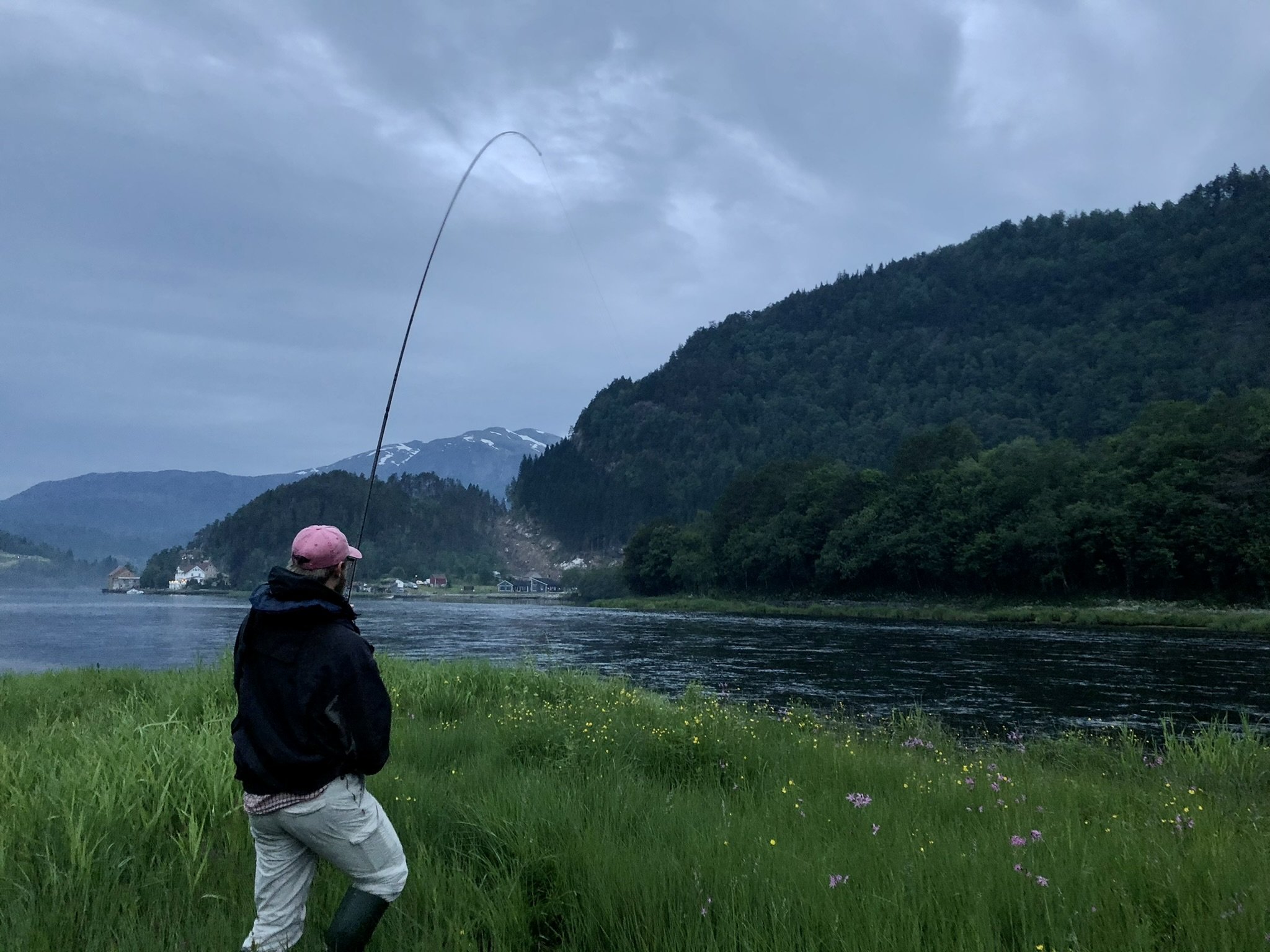The River

“Probably the finest salmon fishing in the world.” Such a bold statement needs to be justified. This article explains why the fishing at Osen merits this acolade.
We let the river and house to one person each week and allow no one other than you and your guests to fish the river. Often there are only one or two fishermen on the River. In comparison with most other rivers Osen is under fished - this ensures excellent salmon fishing for those lucky enough to come to Osen.
We publish our statistics. Not many rivers do but looking at comparable rivers we estimate that per fisherman our catches are two or three times higher.
Osen has the rights to most of the first 5 kms of river. There are no complicated sublets which are commonly found on other rivers that inhibit or adversely affect the quality of fishing.
Salmon are perceptive and quickly tire of seeing lures. Osen’s fishing rights start at the mouth of the estuary to the river so your fly will probably be the first that the salmon sees.
Our fishing statistics go back to 1884 and show that the river is as healthy now as it was 100 years ago. We have not suffered from overfishing, viruses, hydroelectric schemes, pollution, netting or salmon fish farms. The fjord and river have been designated for protection as a salmon river by the government.
House building and development around Osen has been in decline. 100 years ago Osen was a thriving community boasting many houses, 3 pubs, several mills and a shop. Only the shop exists now as a private house and the community is but a few houses. The decline in human habitation has limited pollution and other invasive activity allowing salmon to prosper undisturbed.
Where the river meets the fjord.





The River Gaula has an extraordinarily good head of water. Firstly, the river passes through two lakes, which combined are 24 kms long, providing a huge head of water. In dry spells the two lakes ensure that there is always plenty of water in the river. Secondly the river originates in the Jostedalsbreen Glacier, where in parts the ice is 600 metres deep, providing an almost unlimited source of water. During warm spells glacial meltwater increases, thus even in prolonged dry spells the river is never short of water, indeed the river can actually rise, and good sport can be had long after other rivers have become unproductive.
With most rivers once migrating salmon have passed up stream, that is the last chance you have of catching them. However on this river salmon can only navigate 14 kms where upon they come to an impassable waterfall. Having reached this point, salmon will then head downstream again to find a suitable spawning place giving anglers a second chance of catching the same salmon. Almost all of our water is good spawning territory so there is also a third chance of catching salmon once they have settled in their breeding ground.
The river has an exceptional volume of water able to sustain large salmon in great numbers. This is due to the river starting its journey in one of the wettest places on earth which is also Europe’s largest glacier, the Jostedalsbreen.
The River Gaula’s waters are ideal for salmon. Most glacier fed waters do not sustain salmon as the water, characterised by its blue colour, carries sediment which is an irritant to a salmon’s gills and is generally not attractive to salmon. The River Gaula descends through two long lakes, each some 10 to 15 kms long, where the glacial sediment separates out resulting in gin clear water which is perfect for salmon as it passes the lower reaches at Osen.
After heavy rain the River Gaula clears quickly whereas many other rivers take much longer. The lakes which filter out the glacial sediment do the same for cloudy rain water. So coloured water only has to travel 14 km from the lakes to the river mouth before the river is clear and good fishing conditions are back, a process that may take close to a week on some rivers is over in a day or two on the River Gaula.
The Osfossen Ladder has a fish counter and camera. We consequently know exactly how many fish have entered the river and therefore when it is worthwhile fishing upstream. With an accurate record of fish entering the river we are also able to ensure that the river has sufficient stock of fish to sustain itself in future years.
The Osen stretch of river twists and turns through over 180 degrees. Some pools are best fished as the sun reaches a pool in the morning and others as the sun dips behind the hills in the afternoon or evening. Thus, at any time of the day one can select the pool that is likely to fish best, thereby greatly increase the chances of catching a salmon.
Osen water showing beats and principal pools. 6 boats are stationed on the most productive beats.
Gaula salmon are known to give a great fight for their size. Firstly, Gaula salmon are sleek, torpedo shaped with relatively large tails giving them the power needed to climb the 60 foot ladder at the mouth of the river and subsequently the numerous rapids and waterfalls, some of which look impassable. Weaker salmon unable to navigate these rapids have been weeded out over generations. Secondly, the rapids and white water under the two waterfalls ensure that the river is well oxygenated so salmon when caught are like oxygen-fuelled rockets. Thirdly, along most of its length, the river is fast flowing - this means that when you catch a salmon you are in for a battle. It is often a relief that one does not catch too large a fish as the flow of the river and the strength of a fish can easily overpower a unwary fisherman. Fourthly, Osen’s stretch of water starts at the mouth of the river, so salmon are fresh run from the ocean, not exhausted having travelled miles up river.
There are 14 named pools on the River. Each pool has its own unique qualities with variety to suit both the novice and advanced fisherman. Angling ranges from stone wall fishing to challenging boulder strewn rapids. The river will suit the novice yet stretch the capabilities of the most experienced. Wading is possible in most parts of the river where the bed is a mixture of gravel and small stones. 6 pools have rowing boats, useful in higher water or when into a large fish.
The river is narrow enough for a good caster to reach half way across the river in most places but wide enough that you are not interfered with by anyone fishing on the other bank.
Comparatively consistent fishing can be had throughout the season - this is due to the waterfalls and the ladder. Until early July the best fishing is had below Osfossen where fish will gather until the water reaches 12 degrees. Once salmon start migrating upstream, salmon gather below the second waterfall, Rekevik Foss, where salmon cannot ascend until water levels fall. Whilst migrating salmon will be had at all times, these two waterfalls significantly improve the chances of catching salmon. Both waterfalls have ladders to allow salmon to pass. Whilst many rivers suffer from feast and famine, ie salmon tend to migrate in shoals, the ladders tend to stop salmon from gathering in groups. Thus fishermen have a more even chance of catching salmon throughout their stay.
There are two River Gaulas in Norway - we are the southerly one about 100 kms north of Bergen. You may well ask, if the fishing is that good why haven’t you heard of us? Until 10 years ago the river was let for several decades to one of Norway’s largest companies for their private use. The river is therefore not well known even amongst Norwegians.
Another significant factor in maintaining healthy fishing is that the river is managed by a small number of owners. The sustainability of the fishery is therefore relatively easy to control in the interests of salmon and fishermen.
Unlike many rivers, we are lucky not to suffer from midges and mosquitos.
Finally, your stay will be at one of Norway’s best preserved rectories, a historic and beautiful house, converted to a fishing lodge by the British in the Victorian era.
In summary, Osen combines an exceptional river and a truly magnificent fishing lodge. Rivers and houses of this quality are rare, if not unique.




